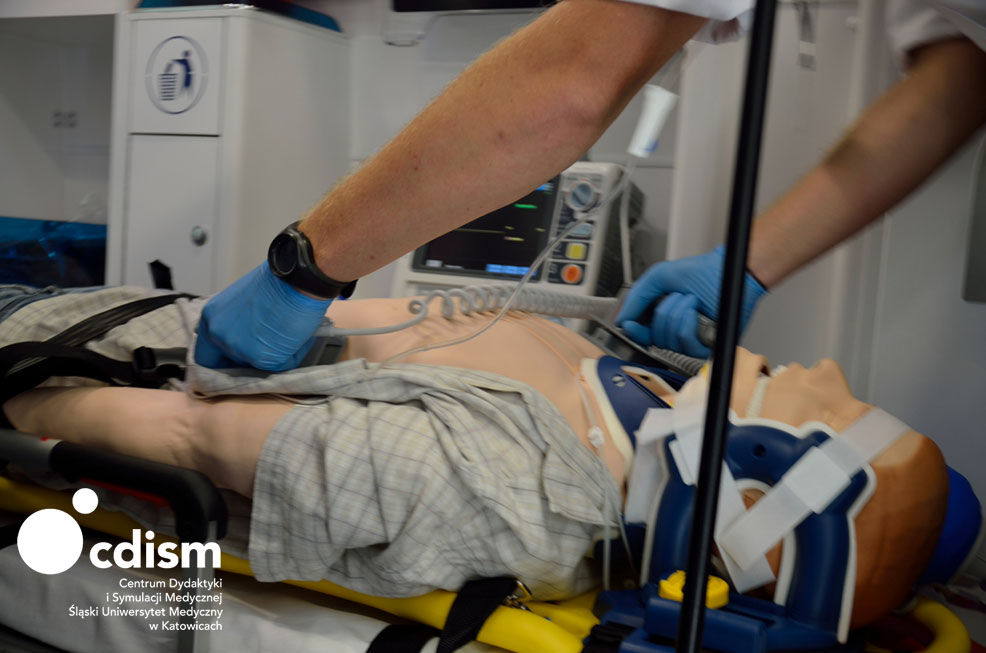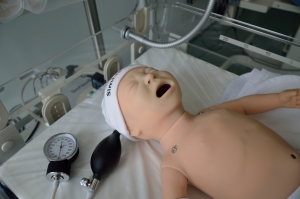 The center has six simulation rooms (operating room, intensive care room, two rooms of hospital emergency department (four stands), pediatric room and labour room and an area suitable for the simulation of pre-hospital emergencies with an ambulance simulator.
The center has six simulation rooms (operating room, intensive care room, two rooms of hospital emergency department (four stands), pediatric room and labour room and an area suitable for the simulation of pre-hospital emergencies with an ambulance simulator.
 The center is equipped with ten advanced patient simulators (seven adult simulators, baby simulator and infant simulator, labour simulator with a newborn baby simulator). Simulation rooms are equipped with necessary medical equipment (such as anesthesia apparatus, ventilators, defibrillators, cardiomonitors, laryngoscopes) and audio-video system to record simulation sessions.
The center is equipped with ten advanced patient simulators (seven adult simulators, baby simulator and infant simulator, labour simulator with a newborn baby simulator). Simulation rooms are equipped with necessary medical equipment (such as anesthesia apparatus, ventilators, defibrillators, cardiomonitors, laryngoscopes) and audio-video system to record simulation sessions.
All simulation rooms are equipped with a simulation system that allows audio-visual recordings of simulation sessions. The computer system combines these recordings with simulator’s physiological parameters and with operations performed by trainees. Complete recordings of the session that give a complete picture of the simulation are then played and discussed during the debriefing. The center has three debriefing rooms, if necessary the analysis of activities can be carried out directly in the simulation room, or in other areas.
 Apart from premises destined for running advanced simulation sessions, the center accommodates two practice classrooms, designed primarily to exercise manual skills, in this case, less sophisticated phantoms and training models are used such as: mannequins to learn advanced life support, mannequins to learn CPR, limb models to learn stitching, intraosseous puncture, models to practice spinal anesthesia, intubation models, coniotomy, pneumothorax decompression and pleural
Apart from premises destined for running advanced simulation sessions, the center accommodates two practice classrooms, designed primarily to exercise manual skills, in this case, less sophisticated phantoms and training models are used such as: mannequins to learn advanced life support, mannequins to learn CPR, limb models to learn stitching, intraosseous puncture, models to practice spinal anesthesia, intubation models, coniotomy, pneumothorax decompression and pleural
drainage models, labour models, models to learn urinary catheterization and kits for small surgery.
In the self-assessment room students and SUM employees are free to study or test their skills in conducting CPR.
We introduced teaching with the aid of standardized patients and organize objective structured clinical examinations (OSCEs).

